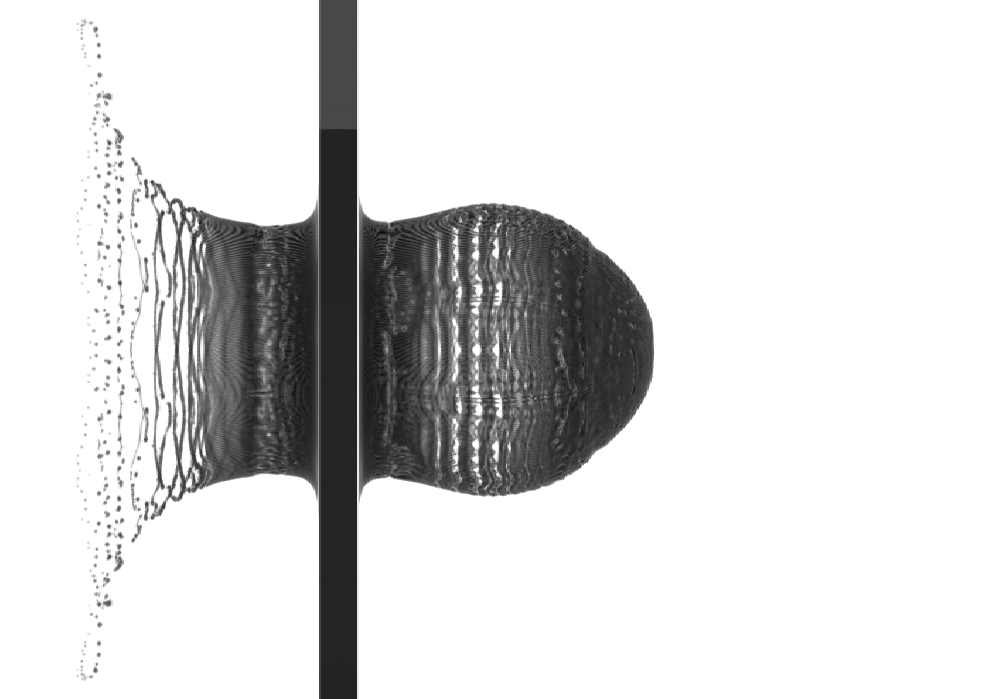We distribute two products, ALEGRA-EM (electro-mechanics) and ALEGRA-HEDP (high ennergy density physics). The code capabilities provided by ALEGRA-EM are a subset of those provided by ALEGRA-HEDP.

ALEGRA-EM
Alegra-EM provides two complementary classes of electromagnetics models:
- Magnetohydrodynamics (MHD): continuum mechanics coupled with electromagnetic induction and Lorentz forces
- Multiphase electrical conductivity models available for about 20 materials.
- Mesh has resistance and inductance in the coupled circuit model.
- Ferroelectric (FE): continuum mechanics coupled with piezo- and ferroelectricity
- Electromechanical material models for about 10 materials.
- Mesh has capacitance in the coupled circuit model.
The primary features of ALEGRA-EM are:
- The use of an Arbitrary Lagrangian-Eulerian (ALE) reference frame provides flexibility, accuracy, and reduced numerical dissipation compared to a pure Eulerian code.
- Tight integration with Dakota provides fully-coupled parametric studies and optimization
- Shared utilities with CTH: inline visualization (spymaster), solid/primitive geometry insertion (diatom), legacy material models (lambda)
- Large deformations and strong shock propagation in multiple materials
- support for random fields and material properties that have statistical distributions, e.g. Gaussian and Weibull
- Finite element discretization including Eulerian extended finite element methods (XFEM) in 2D and 3D
- A hierarchy of magnetohydrodynamics models
- low magnetic Reynolds number
- resistive magnetohydrodynamics
- generalized magnetohydrodynamics
- Energy deposition and explosive burn models
- A wide variety of material models including equation of state (EOS), yield, plasticity, ductile and brittle failure, damage, spall, and anisotropic response
- Approximately 1000 parameterized or tabular equation of state (EOS) models for metals, gasses, explosives, ceramics, polymers and other materials
- Approximately 100 parameterized yield strength models for solids
- Joule heating, thermal transport, and simple models for radiating excess energy
- 3D and 2D Cartesian coordinate systems
- 2D axisymmetric coordinate systems
- 2D modeling with the magnetic flux density vector components in or out of the plane, with the corresponding current density out of or in the plane, respectively
- 3D uses a discretization based on edge and face elements that maintains the discrete flux divergence-free property during the magnetic solve and constrained transport remap stage.
- Lumped element coupled circuit equations
ALEGRA-HEDP
ALEGRA-HEDP is our product that simulates high energy density physics. It is a superset of ALEGRA-EM, and adds the following features to the ALEGRA-EM code base:
- Radiation transport options including single group diffusion, multi-group diffusion, and implicit Monte Carlo transport
- In-line and tabular opacity models for emission and radiation transport.
- Two material temperature option for highly ionized plasmas with long ion-electron equilibration times